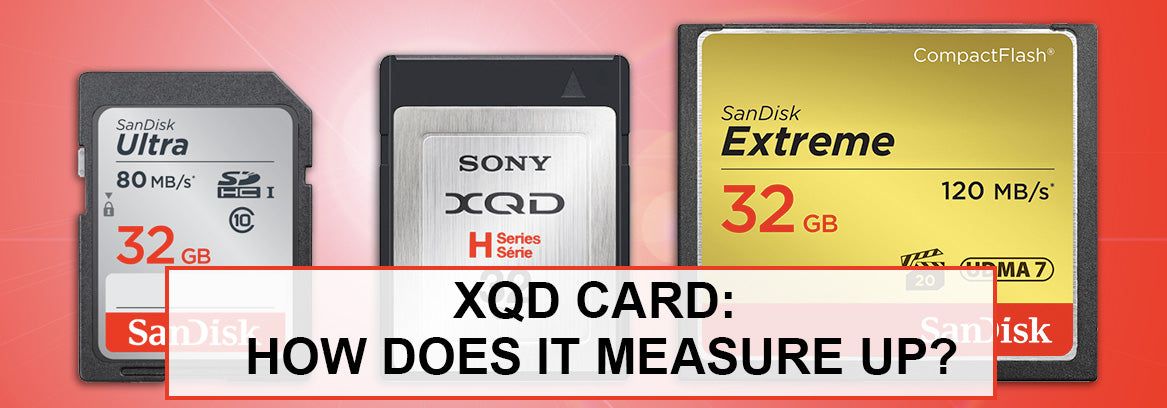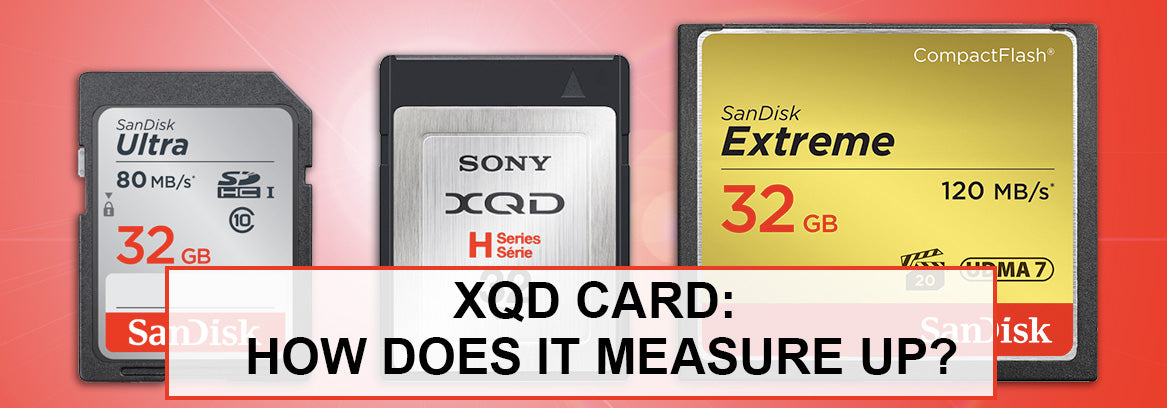
XQD is a media card format that was designed to be a successor to the CompactFlash card. XQD has been adopted by Nikon and was first incorporated into the D4 and D4S and subsequently into the D5 and D500 DSLRs.
The XQD format is designed to take advantage of the speed that these cameras can offer photographers. For instance, the Nikon D5 can shoot at 12 frames per second and can record up to 200 uncompressed NEF (RAW) or JPEG images in a single continuous burst.

What XQD means for you:
- Cards that can keep up with the shooting speed of the camera, clearing the buffer faster. This means that for sports, photojournalism and wildlife photography, you will capture more decisive moments in multiple bursts of continuous shooting. (See the Media Writing Speed Test section in the video, link below.)
- Storage capacities that can hold large amounts of RAW NEF files and/or video files that won’t make you stop shooting to change cards—missing the action.
- Faster transfer rates from card to computer so you can get back to shooting faster.
- XQD cards are more durable.
SD cards remain highly popular, inexpensive, and lightweight. They are ideal for the majority of camera owners, and subsequently are the primary card in most cameras. When it comes to high-speed professional shooting and large files, however, CF, CFast, and powerful XQD cards deem themselves necessary.

